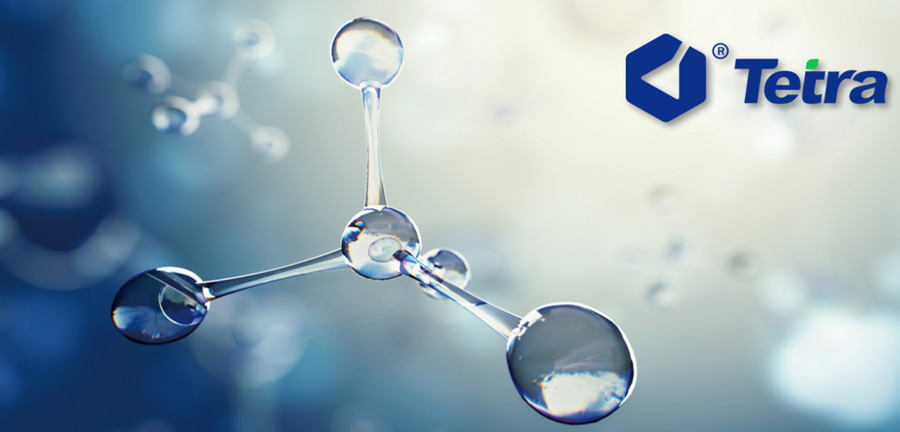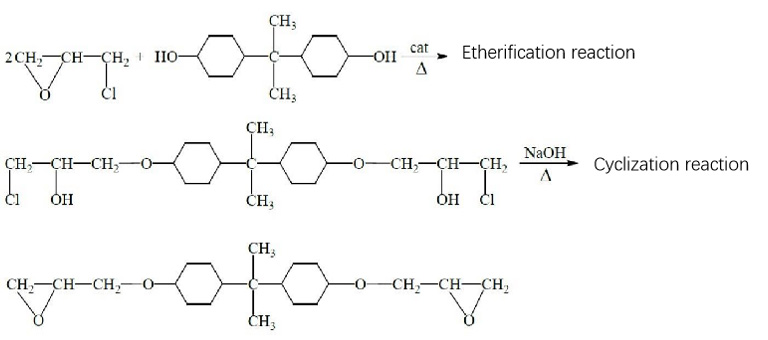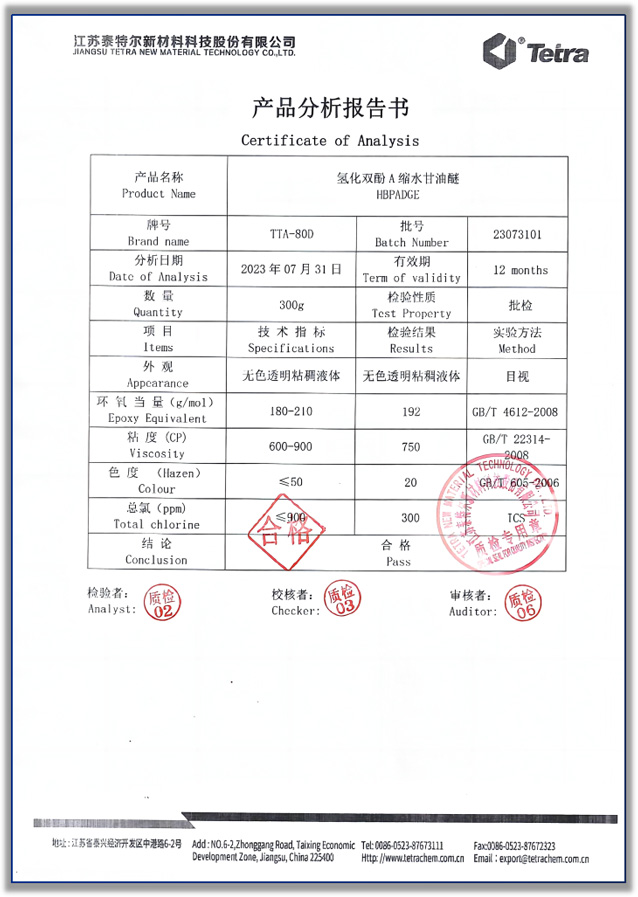
The “weatherability” of materials means a series of aging problems of such products as building coatings, adhesives, rubber products, etc. applied outdoors under the effect of natural weather conditions, such as sunlight, temperature variations, wind, rain, etc., including fading, discoloration, cracking, chalking, and loss of strength. All the problems above exert significant influence on the lifespan of materials. As one of the three thermosetting resins, epoxy resin has been applied to a variety of fields. To solve the weatherability problem, light stabilizers and antioxidants are generally added to improve the weatherability of ordinary epoxy resin. However, these methods cannot solve the problem essentially and the most fundamental solution should be focused on changing resin structure, which means improving the weatherability of resin by introducing saturated skeleton structure. Under the context above, alliphatic epoxy resin and hydrogenated bisphenol A epoxy resins were created, of which, the latter has curing performance similar to bisphenol A epoxy resin, besides the excellent weatherability. Hydrogenated bisphenol A epoxy resin is mainly introduced in this paper.
Hydrogenated bisphenol A epoxy resin was first commercialized by companies such as TCI in Japan. Its main designations available on market at present include Epalloy5000, AL-3040, ST-3000, EP-4080, YDH3000, EX-252, XY518, JH3000, etc. All indexes are similar to each other (see the table below).
Typical Indicators of Hydrogenated Bisphenol A Epoxy Resin | |
Appearance | Colorless to light yellow transparent liquid |
Epoxy equivalent (g/mol) | 210-230 |
Viscosity (mpa.s at 25℃) | 1600-3500 |
Color (APHA) | ≤60 |
Saponifiable chlorine (%) | ≤0.2 |
Inorganic chlorine (ppm) | ≤20 |
Total chlorine (ppm) | -- |
The production process of hydrogenated bisphenol A epoxy resin is similar to that of bisphenol A epoxy resin. According to its main process, hydrogenated bisphenol A and epichlorohydrin are used the main raw materials, which are prepared through such steps as etherification-cyclization-purification under the catalysis effect of catalysts (generally Lewis acid, different catalysts are used by different companies). (See picture below) [1-5]. However, in consideration of restriction of its raw material, hydrogenated bisphenol A, it is not localized yet. In addition, manufacturers prefer intermittent method after considering the small production scale so the low degree of control of three wastes leads to a high price of hydrogenated bisphenol A epoxy resin, thus affecting the use of downstream users.

Mainstream Synthesis Process of Hydrogenated Bisphenol A Epoxy Resin
With the significant localization of the main raw material hydrogenated bisphenol A in recent years, many domestic enterprises including Anhui Xinyuan Technology Co., Ltd., Yantai Oliver Chemical Co., Ltd., Hubei Jinghong Chemical Co., Ltd. have made technological breakthroughs in succession and realized commercial production of a series of hydrogenated bisphenol A epoxy resin designations. Once launched, hydrogenated bisphenol A epoxy resin has been widely applied in such fields as adhesives and electrical insulation materials thanks to its high adhesive strength, good chemical stability, low curing shrinkage, excellent mechanical properties, good insulation properties and simple processing technology. However, according to customer feedback, most of the hydrogenated bisphenol A epoxy resins on market has a high content of chlorine (>15,000ppm), which is largely difficult to meet its application in electronic field. In March 2023, Jiangsu Tetra New Material Technology Co., Ltd. started the R & D of electronic-grade hydrogenated bisphenol A epoxy resin based on client’s entrustment. After trying different synthetic routes for 6 months, it finally developed conforming electronic-grade products through the epoxidation process which it is good at (see the figure below for analytical indicators).

Some preliminary tests have also been made on the curing performance of the epoxy. See the table below for the performance indicators of the resin [6]:
Typical Values | Unit | |
Electronic grade HBPA epoxy | 100 | phr |
MeHHPA | 85 | phr |
Quaternary phosphate accelerator | 1 | phr |
Cure cycle | 100℃*3h+130℃*3h | |
Tg(DSC) | 114 | ℃ |
Tg(TMA) | 131 | ℃ |
α1 | 67 | ppm |
α2 | 173 | ppm |
Moisture absorption rate (double 85 method) | 0.79(72h); 0.83(168h) | % |
Transmittance(/360nm) | 88 (0h); 55(168h) | % |
References:
1. Production of Hydrogenated Bisphenol A and Its Thermosets Properties [J]. Thermosetting Resin, 2005 (01): 22-24
2. The Production and Performance of Hydrogenated Bisphenol A Epoxy Resin[J]. New Material and New Technology, 2018 (44): 62-63
3. Synthesis and Characterization of Hydrogenated Bisphenol-A Epoxy Resin [J]. Journal of Xi’an Shiyou University, 2008 (23): 85-88
4. Research on Synthesis of Special Hydrogenated Bisphenol A Based Epoxy Resin [J]. Thermosetting Resin, 2009 (24): 5-9
5. Characteristics and Application of Hydrogenated Bisphenol A Epoxy Resin. Meeting Report of the 9th Epoxy Resin High-end Application Technology Exchange
6. Sample Test Report of TS Center of Jiangsu Tetra New Material Technology Co., Ltd.